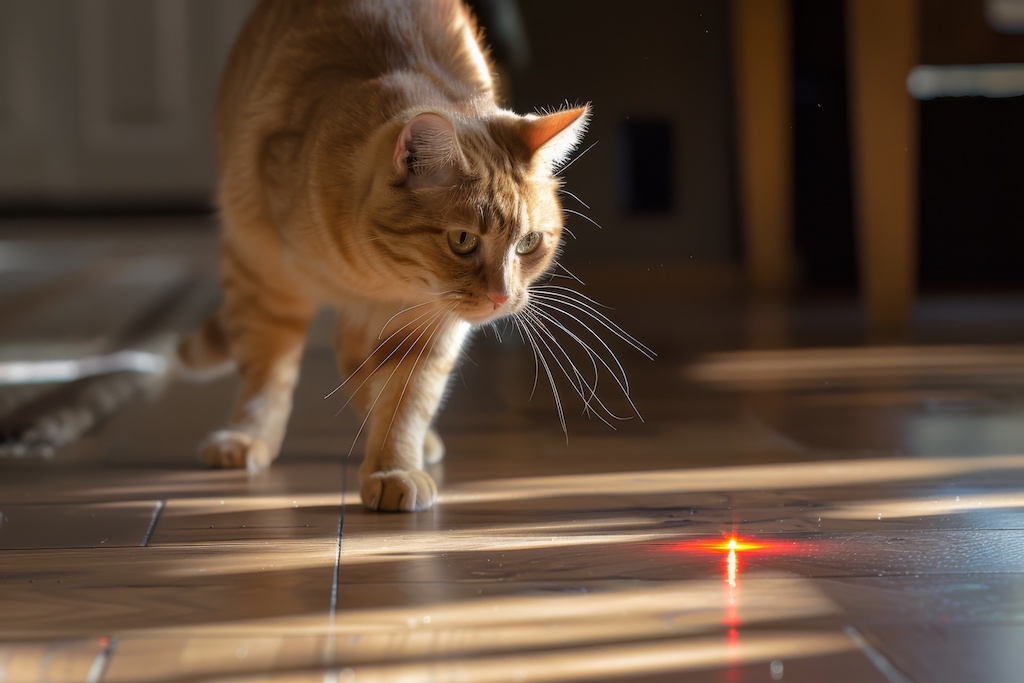The Many Uses for Red Laser Pointers: More Than Just a Cool Beam

Red laser pointers—they’re more than just a fun way to entertain your cat (though, let’s be honest, that’s a pretty solid use). If you’ve ever wondered what else these handy little devices can do, you’re in for a treat. From practical applications to some unexpectedly fun uses, let’s shine a light (literally) on the best uses for red laser pointers!
Understanding Red Laser Wavelengths
Before we dive into the many ways you can use a red laser pointer, let’s talk about why they shine so brightly (pun intended). Red laser pointers typically operate at wavelengths between 630–670 nanometers (nm). This range is in the visible spectrum, making the red beam easy to see, especially in dim lighting. In addition, 635 nm is also considered a true red and is the color of our Power Pro Red Laser Pointer. Compared to green or blue lasers, red lasers are lower in power, which makes them safer and more affordable.
Now, let’s get into how you can put your red laser pointer to good use!
The Many Uses for Red Laser Pointers
1. The Classic: Presentations and Lectures
One of the most common uses for red laser pointers is pointing things out in presentations. Whether you’re in a business meeting, teaching a class, or explaining a concept to a group, a red laser pointer makes it easy to direct attention exactly where you want it. Our Slimline Red Laser Presenter is set at 650 nm wavelengths. Educators and trainers favor models like this, not only because it is wireless (up to 30 feet), but the laser is still bright at 1,500 feet (457 meters). No more awkwardly waving your arms at the screen—just point and click!
2. Cat (or Dog) Entertainment

Yes, we had to mention this one. Red laser pointers are a great way to engage your pets—cats love to chase that little red dot, and some dogs enjoy it too. Just remember to let them “catch” it sometimes (maybe lead them to a treat) so they don’t get too frustrated.
3. DIY Astronomy Assistant
Want to impress your friends on a starry night? A red laser pointer can help you point out constellations in the sky. Since red lasers are visible in darker environments, they make a great tool for amateur stargazers looking to highlight celestial objects without blinding anyone.
4. Night Vision-Friendly Tool
If you’re into night photography, astronomy, or even hunting, a red laser pointer can be useful because red light doesn’t mess with your night vision as much as white or blue light does. It allows you to see where you’re pointing without ruining the low-light setting.
5. Home DIY Helper
Need to hang a picture straight or line up furniture? A red laser pointer can act as a makeshift level by giving you a straight reference line. It’s not as advanced as an actual laser level, but it can help with small DIY projects around the house.
6. Signaling and Safety
While not as bright as green lasers, red laser pointers can be used for signaling in emergency situations. Whether you’re out hiking and need to get someone’s attention or simply want a tool to communicate over a distance, a red laser can be a small but effective safety gadget.
7. Medical Applications
Red lasers are also used in the medical field for various treatments and procedures. Low-level laser therapy (LLLT) utilizes red and near-infrared light to promote wound healing, reduce inflammation, and alleviate pain. Additionally, red lasers are used in dermatology for skin treatments, as well as in dental procedures for soft tissue applications. Their ability to stimulate cellular activity makes them a valuable tool in modern medicine.
Final Thoughts: A Small Gadget With Big Uses
So there you have it! Whether you’re leading a presentation, playing with your pet, or pointing out constellations, red laser pointers are incredibly versatile. They’re affordable, easy to use, and, let’s face it—kind of fun. So next time you see one at the store, you’ll know it’s not just a cool little gadget; it’s a tool with plenty of practical applications!
Got any unique uses for red laser pointers?
Happy Pointing!
Note: Originally Published July 8, 2021
